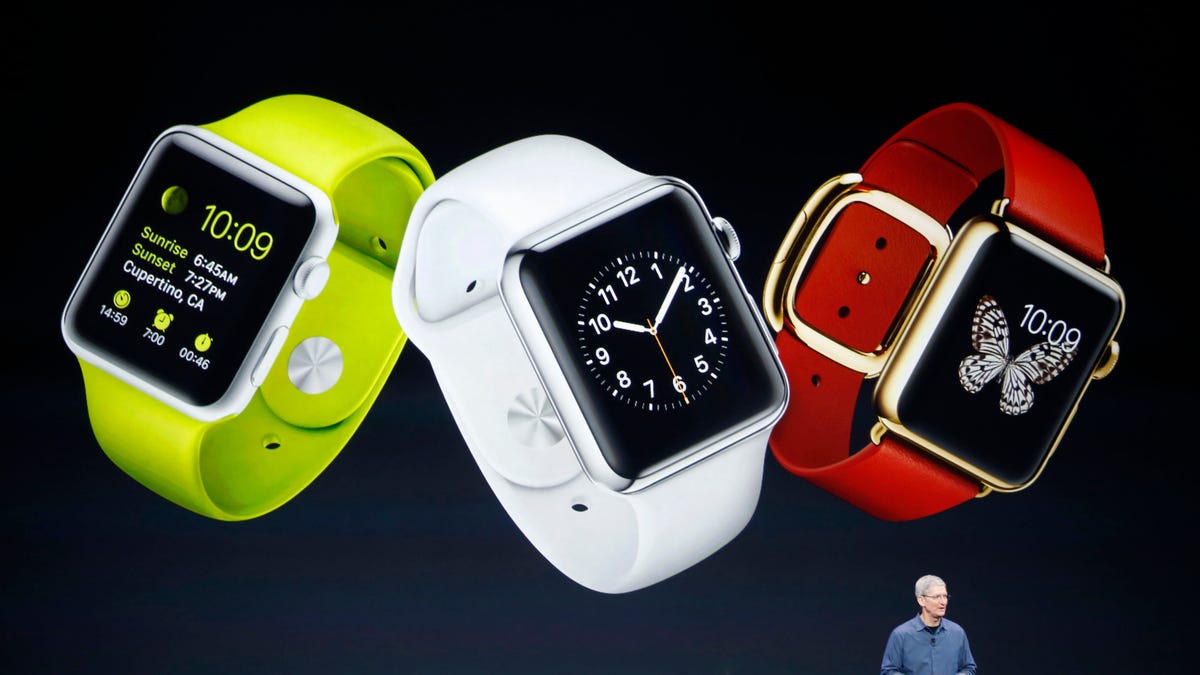
Sept. 6, 2014: Apple CEO Tim Cook speaks about the Apple Watch during an Apple event at the Flint Center in Cupertino, California. (Reuters)
With the release of Apple’s new iPhone and HealthKit platform, technology is moving into a new frontier where people will be able to get information about key health-metrics instantaneously. Apple has taken the most aggressive and innovative stance yet in its vision to enable consumers to get smarter about their health.
Here are five items everyone should know when purchasing the new Apple upgrade:
1. Fitness first.
The new HealthKit includes censors similar to a gyroscope that will be able to track your steps and quantify your progress towards fitness goals. Furthermore, the Apple HealthKit will also have interfaces to other trackers such as Nike+, Jawbone and Withings Pulse. The ability to synchronize across multiple devices will be an attractive feature for consumers, especially considering that most people get bored after a month of using a particular device, and move on to the next new thing. What’s also attractive is a consolidated dashboard which will apparently be offered. The challenge, however, will be how synchronized measurements from the various devices will be based on different definitions and calibrations.
2. The Heart of the matter.
Apple’s new HeathKit will also enable more sophisticated monitoring of body functions by heart rate and blood sugar levels. Apple has been working aggressively outside the box to also incorporate more sophisticated metrics, like heart rate, into their new platform by synchronizing with diagnostic devices. This will be an attractive feature, of course, for not only high performance athletes, but potentially for more convenient real-time monitoring of patients’ ailments who monitor heart rate frequently. One example that is given is where potentially pregnant women could track fetal heart rates, as well. The challenge in putting this kind of information in the hands of the consumer outside a doctor’s guidance could result in misinterpretation of data, and this will be an area that Apple will have to contend with as it pertains to the FDA and its regulatory oversights.
3. What about my data?
Front and center to the whole focus on the new age of technology and health information is the issue of privacy and data rights. As Apple pushes the envelope beyond the norms of simply collecting data around our lifestyle of health, but also wanting to facilitate the exchange of information and electronic medical records with vendors like EPIC, consumers will have to be vigilant about who gets access to their data. Vendors that collect information on fitness activity or other lifestyle-related information often state in their policies that they will not sell individual information. Consumers need to also ensure that such data cannot be sold to third parties, even in the aggregate, for purposes of marketing or advertising. Of course, any information coming in from electronic medical records is completely protected by HIPAA, and only the consumer or the doctor should have access to this information. As technology advances, especially toward the cloud, there will be greater concerns and apprehensions by consumers as to where data is being stored, and assurances that these environments are secure.
4. Jumping to conclusions.
The vast extent to which Apple’s nine billion dollar foray into health care is pushing the limits of complex medical data, doctors will continue to reinforce the importance of consumers not self-diagnosing, based on the data or alerts they are receiving. The frequency at which information can be shared through platforms like the Apple HealthKit could certainly be beneficial for doctors to oversee compliance and adverse effects in real-time, but as in any new technology that is sophisticated it probably should not be used unsupervised. Apple has made it clear that individual data would not be available to third-party developers. However, as adoption increases it will be interesting to see whether application developers will try to get access to aggregate data, and enable consumers to draw conclusions from these apps.
5. Does money matter?
The financial implications of using sophisticated technology to engage consumers in better health creates an interesting dynamic in terms of supply and demand. The fact remains that a large part of the population who require help in improving their overall health and lifestyle, due to economic circumstances, or otherwise, may not be able to afford new technologies like the new Apple iPhone that are emerging. The question remains whether there will be lower cost devices that will be available for the people who really need the motivation and tracking, and this will be a challenge for manufacturers. Money also makes a difference when it comes to incentives that are sometimes required to keep people in the game. It’s not uncommon for there to be a fatigue factor with the novelty of these new devices, and people stop using them after a month. It is likely that in order to keep people actively using technology to monitor their lifestyle it will require much more in terms of financial incentives or other rewards to prevent boredom, and keep them in the game.
Apple is bent on the new HealthKit platform as innovative, and will quickly redefine how consumers, doctors, manufacturers, advertisers and others respond.
